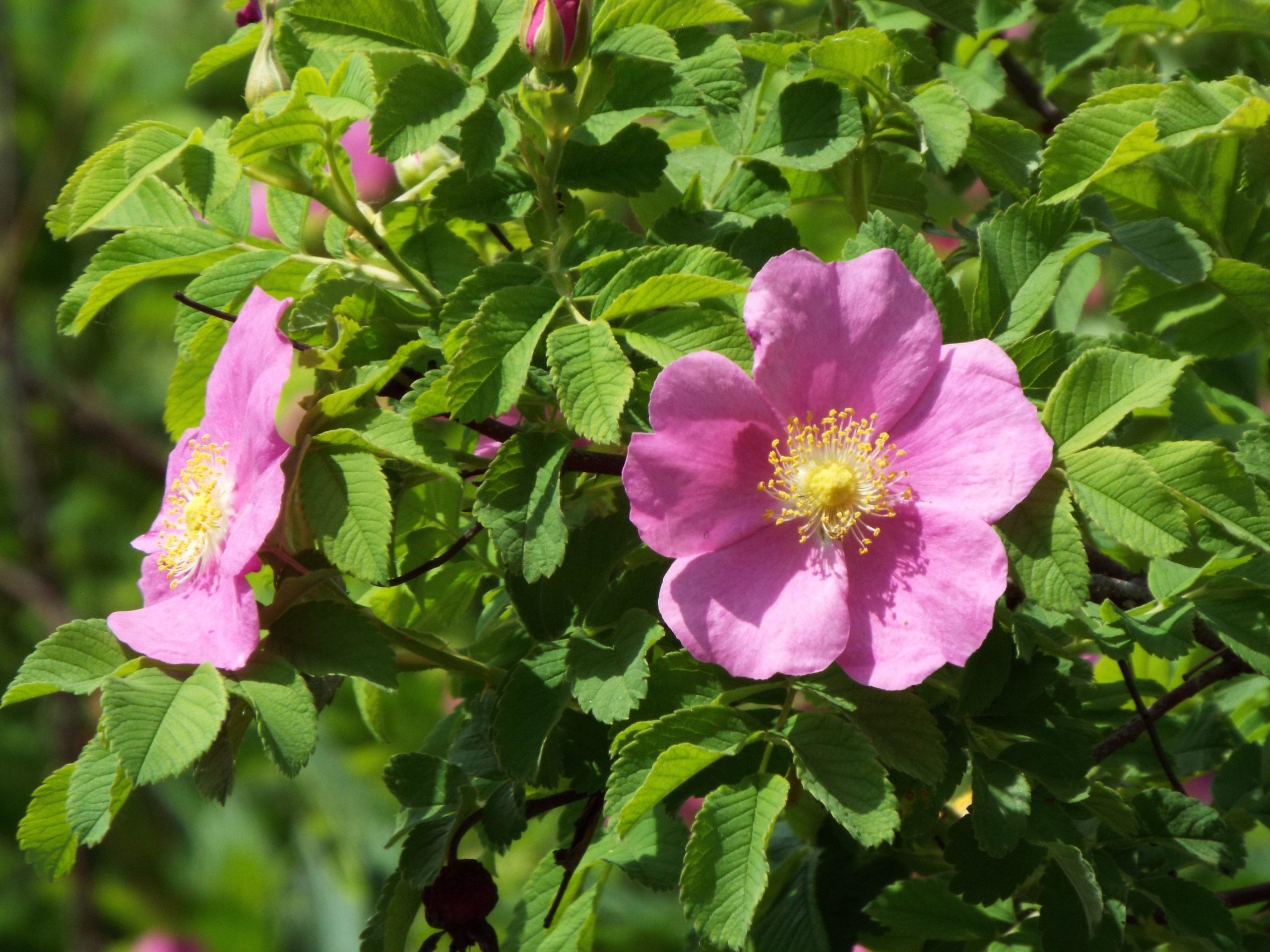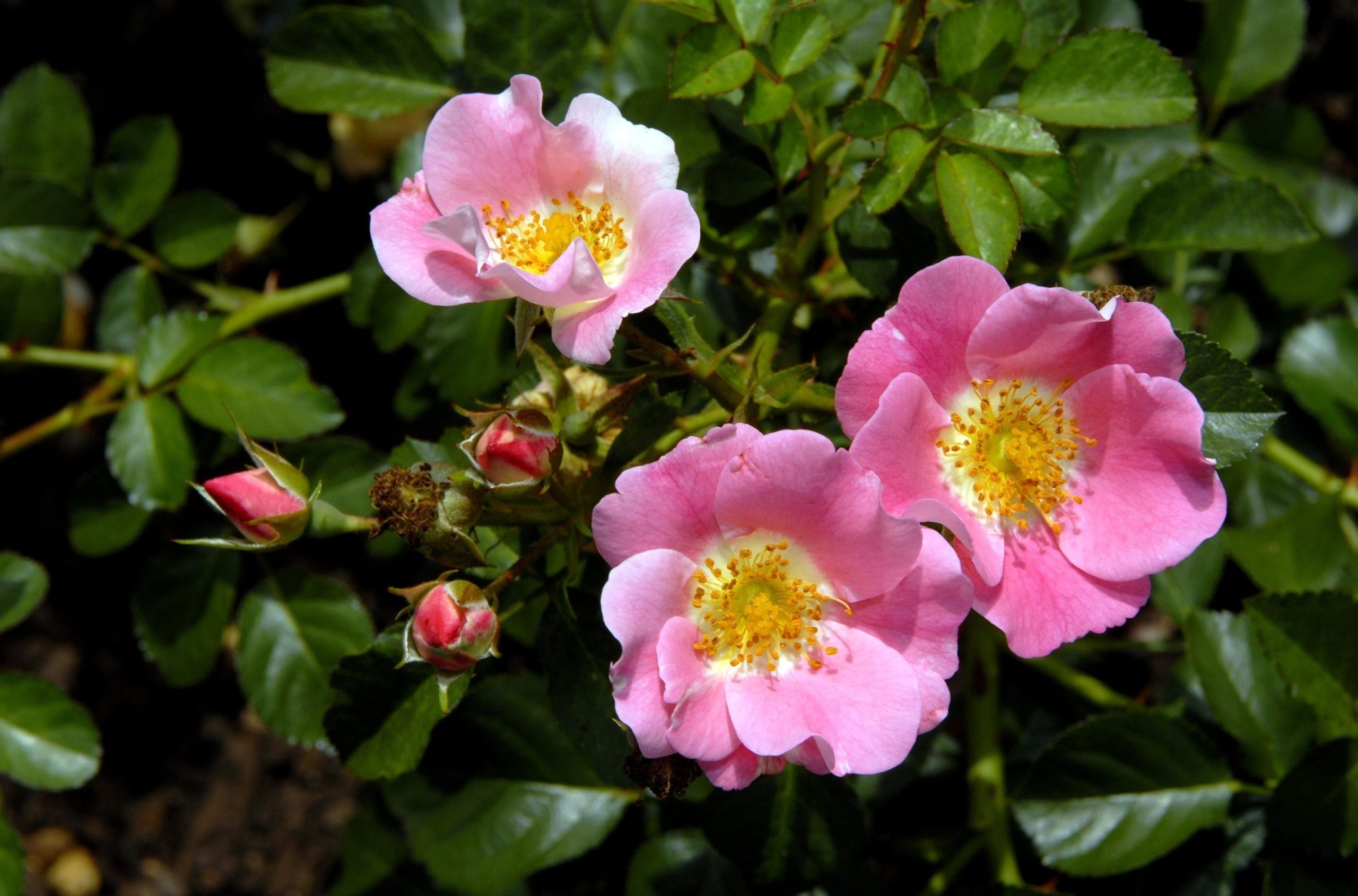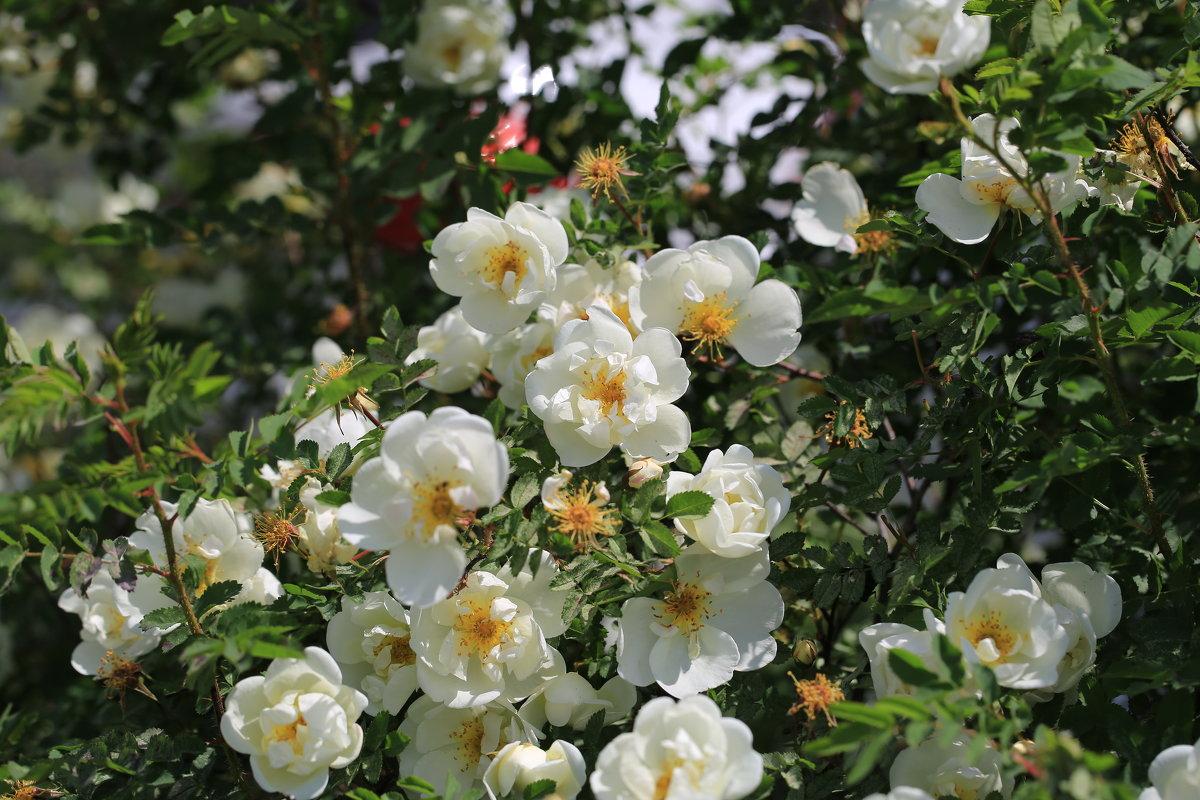Rosehip is a fairly common plant that is found everywhere. It can be seen in forests, ravines, and floodplains. The culture is valued for its high content of vitamin C. That is why its fruits are widely used in folk medicine. This plant is relatively rare in gardens. But recently it has become more and more popular. Therefore, summer residents are often interested in when rose hips bloom and in what month this happens.
Description
Rosehip is a genus of plants in the Rosaceae family, often called the wild rose.In total, more than 300 species of this crop and several thousand of its varieties are known. However, the most widespread is the May rosehip.
This crop is a deciduous shrub characterized by straight, creeping or climbing stems. Their height can vary from 15 centimeters to 10 meters. However, the average parameters are 2-3 meters. The life cycle of the plant reaches 30-50 years.
The shrub is distinguished by a tap root system that goes into the ground to a depth of 5 meters and spreads in different directions by 60-80 centimeters. Some varieties have underground shoots that extend outside. In this case, part of the rhizomes is separated from the mother culture.
Numerous young shoots are covered with soft and thin thorns. The following year the thorns become tougher. The branches themselves differ in different shades - from green to dark red. They are covered with felt fluff. In some varieties, thorns are present on aerial roots, pedicels and generative shoots.
Rosehip flowering lasts from May to June and takes approximately 20 days. In many species, the buds open early in the morning and close at night. This plant has the correct flower formula. They include 5 sepals, 5 petals and many pistils with stamens. The diameter of the flowers can be 1.5-10 centimeters.They form corymbose or paniculate inflorescences. Most varieties have a sweetish aroma. However, there is also a fetid rosehip that emits an unpleasant odor.
Fruit ripening is observed only in plants older than 2-3 years. This stage usually lasts from August to September. Ripe fruits reach a diameter of 1-1.5 centimeters and acquire a red, black or orange hue. Rose hips may also be covered with spines or bristles.
Popular varieties
Today, a large number of varieties of this plant from the Rosaceae family are known. The most popular include the following:
- Vitamin – obtained at the All-Russian Research Institute of Aromatic and Medicinal Plants. The crop is distinguished by its large fruits, which contain a lot of vitamin C. From 1 bush you can get up to 2.5 kilograms of berries. At the same time, there are no thorns in the area where the fruit is located. This makes harvesting easier. The fruits are large in size and weigh 4 grams. They form brushes.
- Xanthina is one of the most decorative varieties of rose hips, which is distinguished by its unusual colors. The height of the crop reaches 2.5 meters. The flowers are large in size and grow up to 5 centimeters in diameter. They are semi-double. Flowering occurs in May-June. Scarlet fruits appear in September.
- In memory of Hasanov - is an ornamental plant that is distinguished by large white flowers. They form inflorescences of 6-9 flowers. The plant has an average size of 1.5-2 meters. Moreover, its diameter is 1.5 meters. The bush is slightly spreading.
Breeders have developed many thornless varieties that are easy to care for and harvest. Such plants are not completely devoid of thorns, but their number is minimal.Among such crops, it is worth highlighting the varieties Grushenka, Yadviga, and Besshipny.
Growing instructions
Rosehip is an undemanding crop, so it is quite easy to care for. To plant the plant, a well-lit area that is located in an elevated place is required. Since the root system of the crop penetrates deep into the soil, it should not be planted in lowlands. Places with high groundwater levels are also not suitable. In addition, the plant reacts poorly to waterlogged or saline soils.
It is worth noting that rose hips develop normally even in dry and infertile soil. However, the area should not be waterlogged or swampy. The most suitable options for growing plants include black soil and gray forest soil. Increased acidity can be neutralized with rotted manure. It is also permissible to use a composition based on compost and mineral fertilizers.
You can plant or replant the crop in both spring and autumn. In the first case, it is important to wait until warm weather sets in; in the second, planting work is carried out at the end of October or at the beginning of November. For planting, it is worth using seedlings 1-2 years old. First, the soil must be cleared of the roots of weeds and previous plants and dug up to a depth of 20 centimeters. For rose hips you need to prepare holes measuring 50x50 centimeters. When planting several plants, the interval between them should be 2 meters.
It is recommended to fill the holes with a composition based on the top layer of soil, 15 kilograms of humus, 50 grams of potassium sulfate and 250 grams of superphosphate. Ground fragments of the plant need to be shortened to 10 centimeters. In this case, the roots should be cut to 20 centimeters.Immediately before planting the crop in a moistened hole, the rosehip root system should be dipped in a composition based on manure and peat.
The crop requires moderate irrigation. However, most often it lacks moisture, which accumulates in the soil naturally. Artificial humidification is required only in hot weather and drought. As a rule, a maximum of 3 waterings are carried out during the season. For 1 bush you need to use 2 buckets of water.
From the second year of life, the bush needs to be formed. At the initial stages, it is necessary to prune dry or damaged branches. This procedure is recommended to be carried out in the fall - after the leaves fall. At the age of eight, the rosehip needs rejuvenating pruning.
Reproduction methods
Rose hips can be propagated in different ways. To propagate the crop with seeds, they must be collected from unripe brown fruits. This is done in August - before the shell hardens. It is recommended to plant seeds in the fall. This is best done in October. The grains are placed directly into the soil. In this case, the furrows are sprinkled with sawdust and humus.
In early spring, you need to install a frame over the plantings and stretch the film over it. This will speed up the germination of seed material. When a pair of true leaves appear, the bushes can be planted.
When planting a crop in the spring, the seeds need stratification. They need to be combined with peat or river sand and put in the refrigerator.Periodically, the grains need to be taken out and mixed.
To preserve the varietal characteristics of the mother crop, it is recommended to propagate rose hips by root suckers. To do this in spring or autumn, you need to take a fragment measuring 25-40 centimeters, separate it with a shovel and plant it.
Also, the offspring does not need to be separated. To do this, you need to hill it high, water it and add soil from time to time. As a result, this fragment of the plant will take adventitious roots. Next season, in the fall, it can be separated from the mother plant, and in the spring, it can be carefully dug up and replanted in a new area.
Rose hips can also be propagated using cuttings. They need to be harvested in spring or summer. It is also sometimes possible to do this in the fall. Young shoots that have buds should be used as cuttings. Such shoots take root faster. It is important that the cutting includes 2-4 viable buds.
You need to make a sharp horizontal cut above the top bud, and an oblique cut below. Half the leaves from the bottom of the cutting must be removed. Then it is recommended to treat the shoot with a root growth stimulator and deepen it into the prepared substrate. The planting should be covered with a cap, which will help create greenhouse conditions. The seedling needs to be regularly ventilated and watered. Thanks to this, it will take root faster.
Enemies of rose hips
The main enemy of the plant is the rose fly, which causes damage to the fruit. To cope with this parasite, it is recommended to use the insecticide “BI-58”. Rose hips can also suffer from attacks by sawfly larvae. They make passages in the shoots of the plant, which leads to darkening and death.
Pricks from the roseate gallworm cause mossy growths to appear on the branches. At the same time, leaf roller caterpillars infect young foliage, and spider mites absorb cell sap. It will not be possible to destroy these pests without the use of special insecticidal preparations. To avoid attacks by parasites, the soil around the bushes needs to be dug up in the fall.
As for pathologies, the plant suffers more from powdery mildew. This disease is accompanied by the formation of a white plaque. Treatment with a suspension of colloidal sulfur with a concentration of 1% will help cope with the disease. You can also use various fungicides for this.
The crop may suffer from black rust. When signs of this disease appear, it is necessary to remove all affected fragments and treat the soil. In this case, the top layer of soil must be replaced. To avoid the development of rust, you can use copper sulfate or other copper-based preparations. Also, during the growing season, the bush can be sprayed with a copper-soap solution.
Application in design
The plant has excellent decorative properties, which allows it to be actively used in landscape design. The culture is suitable for creating a hedge. It can be planted alone or combined with other plants. Dwarf varieties can be grown in pots. Such compositions are perfect for decorating recreation areas.
Rosehip is a fairly popular crop that has excellent decorative properties. In addition, the fruits of the plant are rich in vitamin C. That is why the plant is increasingly found in summer cottages. For its cultivation to be successful, it is important to follow the rules of agricultural technology.

















